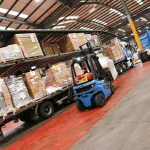
The Complete Guide: How to Choose the Perfect Wooden Pallets for Your Kenyan Business in 2025
Introduction: Why Proper Pallet Selection Matters
In Kenya’s rapidly evolving business landscape, choosing the right wooden pallets isn’t just about storage – it’s a strategic decision that impacts your entire operation. This guide will walk you through every step of the selection process, helping you make an informed decision that aligns with your business needs and budget.
Step 1: Assess Your Business Requirements
Conducting a Needs Analysis
Begin by documenting your specific requirements:
- Calculate your daily handling volume:
- Count the number of products moved per day
- Measure peak period requirements
- Consider seasonal fluctuations
- Document special handling needs
- Evaluate your storage environment:
- Indoor vs. outdoor storage
- Temperature and humidity levels
- Exposure to elements
- Pest concerns
- Chemical exposure risks
- Document your handling equipment:
- Types of forklifts used
- Manual handling requirements
- Racking systems specifications
- Loading dock configurations
Creating Your Requirements Document
Develop a comprehensive requirements sheet including:
- Load specifications:
- Maximum weight capacity needed
- Typical load weight range
- Product dimensions
- Stack height requirements
- Operational parameters:
- Hours of operation
- Handling frequency
- Storage duration
- Transportation methods
- Safety requirements
Step 2: Understanding Pallet Types and Standards
Types of Wooden Pallets Available in Kenya
- By entry type:
- Two-way entry
- Four-way entry
- Partial four-way entry
- By deck style:
- Single deck
- Double deck
- Reversible
- Non-reversible
Local and International Standards
- KEBS requirements:
- Documentation needed
- Testing procedures
- Certification process
- Renewal requirements
- Export standards:
- ISPM 15 compliance steps
- Treatment requirements
- Marking specifications
- Documentation needs
Step 3: Evaluating Wood Types
Common Woods Used in Kenya
- Cypress:
- Natural durability rating
- Typical lifespan
- Cost considerations
- Best applications
- Pine:
- Strength characteristics
- Treatment requirements
- Availability factors
- Price ranges
- Cedar:
- Weather resistance properties
- Premium applications
- Cost-benefit analysis
- Maintenance needs
Making the Right Wood Choice
Consider these factors:
- Environmental conditions:
- Indoor storage requirements
- Outdoor exposure tolerance
- Temperature fluctuations
- Humidity resistance
- Usage patterns:
- Frequency of use
- Load requirements
- Handling methods
- Expected lifespan
Step 4: Size and Design Selection
Determining Optimal Dimensions
- Measure your products:
- Length, width, height
- Standard package sizes
- Stacking patterns
- Overhang allowances
- Consider facility constraints:
- Racking specifications
- Doorway dimensions
- Aisle widths
- Storage height limits
Design Features Selection
- Deck board configuration:
- Spacing requirements
- Board thickness
- Number of boards
- Edge distance
- Support structure:
- Stringer vs. block design
- Support spacing
- Reinforcement needs
- Bottom board layout
Step 5: Supplier Evaluation Process
Creating a Supplier Shortlist
- Research potential suppliers:
- Local manufacturers
- Importers
- Distributors
- Direct sellers
- Initial screening criteria:
- Manufacturing capacity
- Quality certifications
- Location accessibility
- Financial stability
Conducting Supplier Assessments
- Site visits checklist:
- Production facility inspection
- Quality control processes
- Storage conditions
- Treatment facilities
- Documentation review:
- Business licenses
- Quality certifications
- Environmental compliance
- Safety standards
Step 6: Cost Analysis and Budgeting
Understanding Total Cost of Ownership
- Initial costs:
- Purchase price
- Delivery fees
- Treatment charges
- Certification costs
- Ongoing costs:
- Maintenance requirements
- Repair expenses
- Replacement frequency
- Storage costs
Budget Planning
- Setting your budget:
- Initial investment calculation
- Monthly operating costs
- Maintenance allowance
- Emergency fund allocation
- Cost optimization strategies:
- Volume pricing options
- Maintenance contracts
- Repair vs. replace analysis
- Inventory management
Step 7: Trial and Testing
Conducting Pilot Tests
- Sample evaluation process:
- Request test samples
- Conduct load tests
- Monitor performance
- Document results
- Performance metrics:
- Durability measures
- Handling efficiency
- Storage compatibility
- Staff feedback
Evaluating Results
- Data collection:
- Performance statistics
- Damage rates
- Handling times
- User feedback
- Analysis criteria:
- Cost effectiveness
- Operational efficiency
- Durability factors
- Maintenance needs
Step 8: Making the Final Decision
Decision Matrix Development
- Create evaluation criteria:
- Weight each factor
- Score options
- Calculate total scores
- Compare results
- Consider long-term factors:
- Growth plans
- Market changes
- Technology advances
- Regulatory updates
Implementation Planning
- Develop rollout strategy:
- Phase-in schedule
- Staff training plans
- Monitoring procedures
- Feedback mechanisms
- Create contingency plans:
- Backup suppliers
- Emergency procedures
- Alternative options
- Risk mitigation
Frequently Asked Questions
[Previous FAQ section remains relevant and can be expanded based on specific needs]
Maintaining Your Pallet Investment
Regular Maintenance Schedule
- Daily inspections:
- Visual checks
- Basic cleaning
- Damage reporting
- Usage monitoring
- Monthly maintenance:
- Detailed inspection
- Minor repairs
- Treatment assessment
- Performance review
Optimization and Improvement
- Regular review process:
- Performance metrics
- Cost analysis
- Efficiency measures
- User feedback
- Continuous improvement:
- Technology updates
- Process refinement
- Staff training
- Supplier relations
Conclusion: Ensuring Long-Term Success
Selecting the right wooden pallets for your Kenyan business is a crucial decision that requires careful consideration of multiple factors. By following this comprehensive guide and regularly reviewing your choices, you can ensure your pallet selection continues to support your business goals effectively.
Remember to stay informed about market changes, new regulations, and emerging options. Regular assessment and adjustment of your pallet strategy will help maintain optimal operational efficiency and cost-effectiveness.





Add a comment